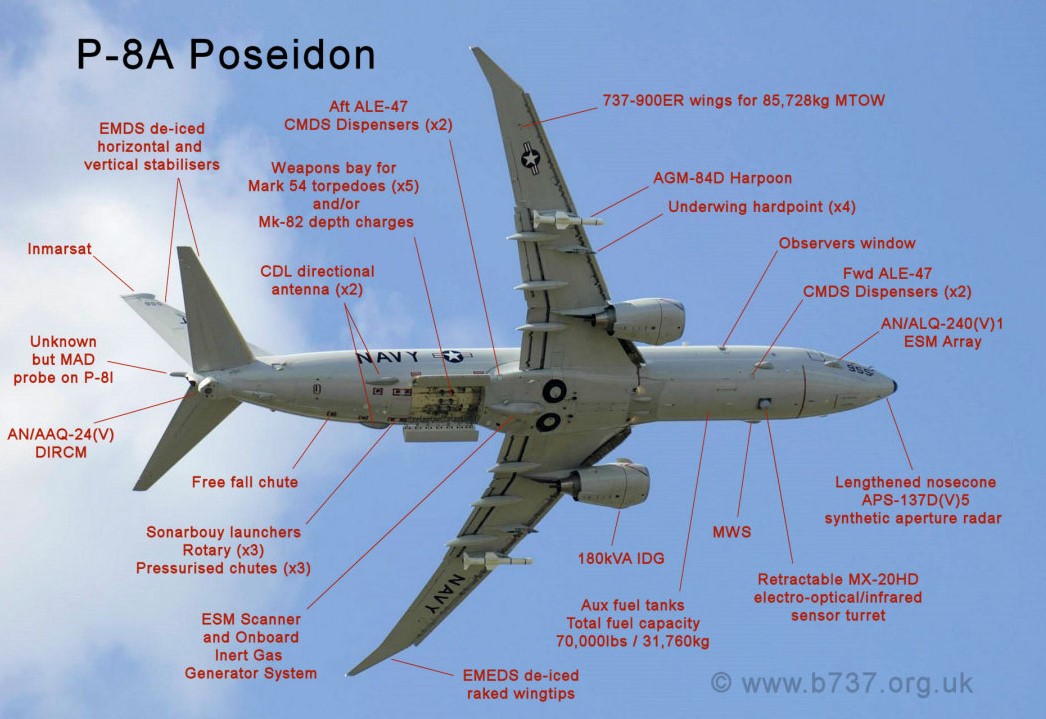The sale of these aircraft to Berlin is a further blow to European defence construction, as well as to its DTIB.
5 Poseidon
The Defense Security Cooperation Agency (DSCA), the U.S. agency in charge of awarding FMS (Foreign Military Sales), has notified the U.S. Congress of a procedure underway to provide the Marineflieger with five P-8A Poseidon maritime patrol aircraft for $1.77 billion. The German Ministry of Defense had previously approached the U.S. State Department to initiate the process. The German Navy, which used to operate a fleet of 20 Breguet Atlantic aircraft, had until now eight P-3C Orions, acquired second-hand from the Dutch Navy in 2005, and upgraded to CUP standard by Lockheed-Martin. This standard proved to be limited from 2011 and required a second upgrade via an FMS procedure in 2014, to integrate a new mission system and a new, more powerful sonar.
The P-3C problem
Another modernization of these aircraft was planned from 2024 to extend their use until 2035, when the acquisition of a platform that would be common to France and Germany would be available. A letter of intent (LOI) had actually been signed by the two countries at the ILA Berlin show in April 2018. But the additional costs of the German P3 modernization program, as well as the necessary lead times, risked creating a capability gap at a time when tensions, and Russian submarine patrols, were intensifying in the Baltic Sea, according to the Marineflieger. Therefore, in June 2020, Berlin decided to suspend the MLU upgrade planned for 2024 in order to study a "gap filler" solution between the RAS 72 Sea-Eagle, the Airbus C-295 MPA, and the P-8 Poseidon. The rumor of a joint maritime patrol between the French and German navies had been spread among some journalists last fall. Airbus had proposed a more ambitious solution than the C-295, through a multi-mission Airbus A-320Neo. And Thales DMS had communicated extensively on the development of a new radar called Air Master C, designed for the Royal Air Force's Guépard helicopters, to demonstrate its legitimacy to develop the radar that would equip the Airbus aircraft. But considering that such a project could not be realized before the withdrawal of the P-3 in 3 years, the Germans opted for the P-8 Poseidon. A "combat-proven" aircraft, more than 140 of which have been ordered worldwide, will be offered by Boeing to Nato members in 2019, and offered by Washington as an FMS at a price that defies all competition.
European defense?
This acquisition will certainly offer the German Navy a considerable leap in capabilities for its missions (5900 km range, Raytheon AN/APY 10 radar, more than a hundred floating sonars, 11 carrying points, Harpoon anti-ship missiles, gliding bombs, mines, and Mark 54 torpedoes...) but it risks distancing the German Navy from its missions. ), but above all it risks distancing the Germans a little more from a European defence project based on a privileged relationship with France. Indeed, the P-8 Poseidon is not only a multi-mission aircraft, it is also a command platform offering collaborative combat options with American aircraft such as the F-18 E/F via link 16, or with naval platforms via link 11. Above all, it will allow the Germans to carry out combined operations with the British and Norwegians, who have ordered 9 and 5 of these aircraft respectively, and even with the Finnish F-18s, by pushing their missions to the extremities of the Gulf of Bothnia and towards the Russian border. Finally, this acquisition could also allow General Atomics to return to the heart of the debates concerning the future European Male UAV. Indeed, the American drone manufacturer now offers the Sea Guardian, a Reaper dedicated to maritime patrol missions with a 40-hour range. It was designed to operate in the field of anti-submarine warfare at low altitude, and especially in tandem with the P-8, which operates at higher altitudes. General Atomics is also expanding its activities in Europe with the acquisition a few days ago of the Swiss company Ruag Services, which is in charge of modernizing the maritime surveillance aircraft built by the German group Dornier. If some people were recently trying to find out who had an interest in stirring up the controversy between French and German public opinion around the SCAF, this new commercial episode has at least the advantage of making certain hypotheses more tempting than others ....
Découvrez cet article sur Air&Cosmos

